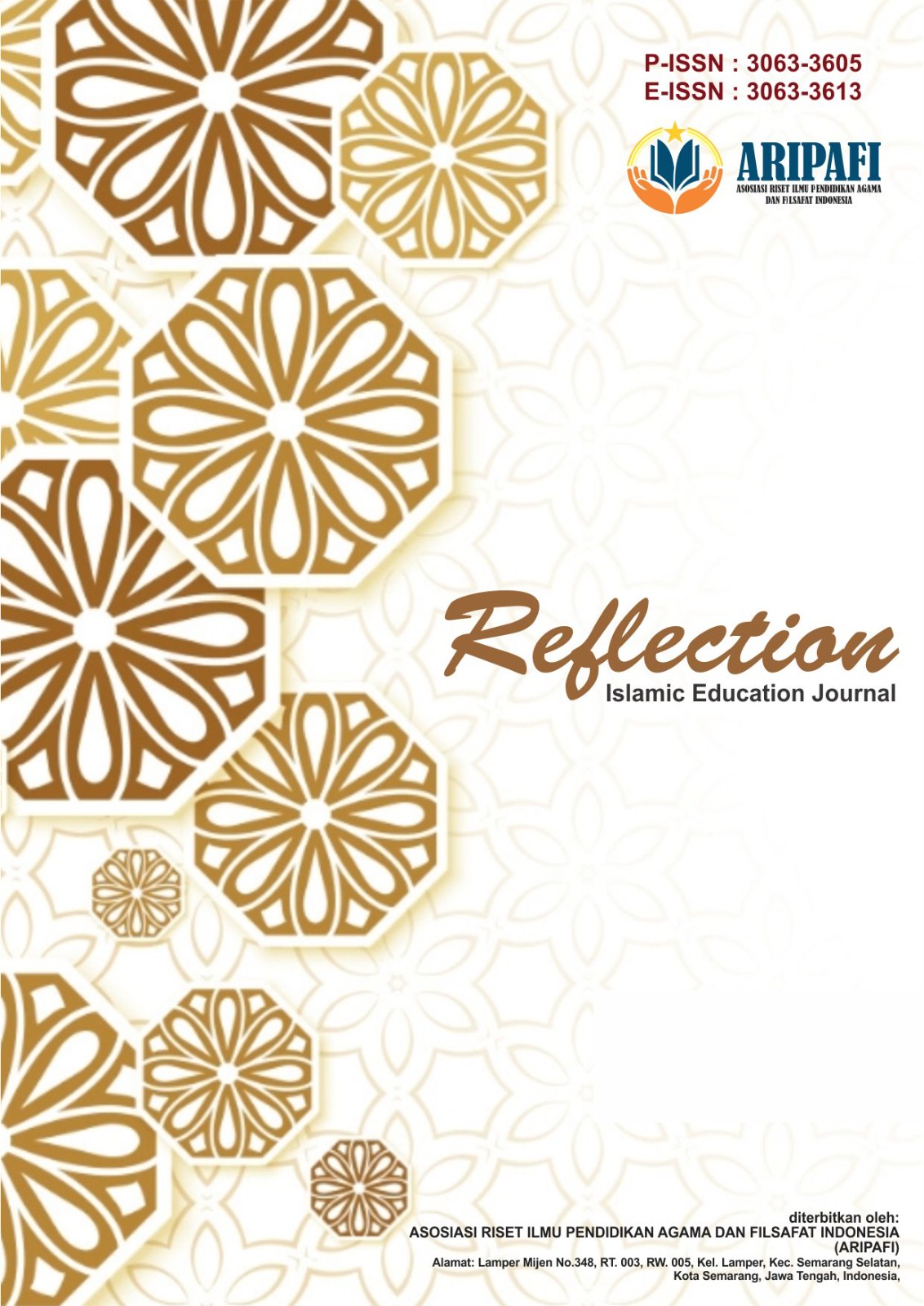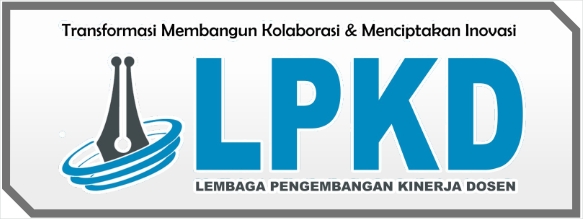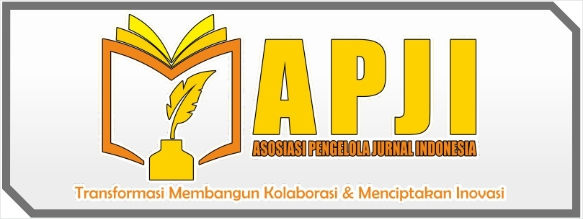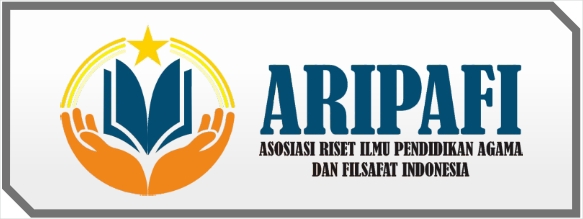Upin and Ipin's Film Homely Life Education Al-Qur'an Perspective
DOI:
https://doi.org/10.61132/reflection.v2i2.739Keywords:
Al-Qur'an Perspective, Homely, Upin and IpinAbstract
The film Upin and Ipin contains many good lessons to study, but no one has studied the characteristics of a simple life that characterizes the film. This article aims to reveal education about the simple life of the film Upin and Ipin from the perspective of the Qur'an. The author uses qualitative methods with descriptive analysis, with the main data source being the animated film Upin and Ipin, and supported by secondary sources in the form of journal articles, books, interpretations of the Al-Qur'an and web sources, which support the data to strengthen the arguments in the analysis. The animated film Upin and Ipin is an education on simple living that is in line with the conception of the Qur’an. For the Qur'an, the birth of humans, society, culture, civilization, language, race, tribe and clan as well as the fall of nations are signs that humans must ponder and learn from, so that the Qur'an. A modest life as referred to in the Qur'an includes not being excessive and not being too stingy, therefore, people who distribute their wealth to people in need are good people. Allah SWT through the Qur'an has ordered His servants to live modestly. This is because by living simply, humans can control their lives and not fall into hedonistic lifestyles that tend to lead humans into traps. In this way, the education of modest living contained in the film Upin and Ipin is in line with the conception of the Qur'an. The research implications of the importance of moderation in life create a stable and flexible life.
References
Ahmed, I. (2015, June 26). Upin & Ipin, apa yang membuatnya begitu terkenal? Kompasiana. https://www.kompasiana.com/isaac_ahmed/
Al Asyari, A., & El Syam, R. S. (2023). Interpretasi pengobatan dialek-konteks pendidikan Islam. IHSANIKA: Jurnal Pendidikan Agama Islam, 1(1), 1–14. https://doi.org/10.59841/ihsanika.v1i1.527
Anggara, R. (2020, April 3). 5 sketsa karakter Opah di serial Upin & Ipin saat muda, mana paling pas? Akurat. https://www.akurat.co/
Busthami, Y. (2018, November 18). Upin Ipin produksi Yahudi? Kompasiana. https://www.kompasiana.com/franrizmy/
Desmond, D. F., & Taisin, N. J. (2018). Pengetahuan lokal dalam pertanian masyarakat Kadazandusun di Sabah. Malaysian Journal of Social …, 3(3), 122–130. https://doi.org/10.47405/mjssh.v3i3.114
Dream. (2020). Viral video Upin & Ipin goyang dangdut diprotes netizen Malaysia. Dream.Co.Id. https://www.dream.co.id/
Edensor, T., Millington, S., & Steadman, C. (2023). Making the football stadium homely: Manchester City’s relocation from Maine Road to the Etihad. Emotion, Space and Society, 49(2), 100971. https://doi.org/10.1016/j.emospa.2023.100971
El-Syam, R. S. (2019). Al-Qur’an sebagai sumber pembaharuan peradaban manusia. Manarul Qur’an: Jurnal Ilmiah Studi Islam, 19(2), 74–81. https://doi.org/10.32699/mq.v19i2.1604
Hildawati. (2023, February 18). Pendidik: Belajar dari film kartun asal Malaysia, Upin Ipin. Radio Republik Indonesia. https://www.rri.co.id/
Ibnu Katsir, M. (2019). Tafsir Ibnu Katsir. Jakarta: Mitra Netra.
Kamal, F., Suyud El Syam, R., Rofik, A., & Asih, S. W. (2023). Integrasi pendidikan keluarga dan pendidikan Islam dalam pengembangan kepribadian anak. Amorti: Jurnal Studi Islam Interdisipliner, 2(1), 32–44. https://doi.org/10.59944/amorti.v2i1.69
Kaunaini, N. N. (2023). Nilai-nilai moderasi beragama dalam animasi Upin dan Ipin pada tema hari raya keagamaan [Skripsi, UIN Walisongo Semarang].
Kemdikbud. (2025). Kamus Besar Bahasa Indonesia (KBBI) daring. Badan Pengembangan dan Pembinaan Bahasa.
Kementerian Agama. (2020). Al-Qur’an dan terjemahannya. Jakarta: Lajnah Pentashihan Mushaf Al-Qur’an.
Kemkominfo. (2019, March 1). [HOAKS] Kartun Ipin dan Upin produk Yahudi untuk menghancurkan Islam. Kementerian Komunikasi dan Informatika RI. https://www.kominfo.go.id/
Kirana, F. A. (2023). 6 tanda orang yang sederhana dan bersahaja dalam hidup. Fimela.Com. https://www.fimela.com/lifestyle/
Ko, S. Q., Chua, C. M. S., Koh, S. H., Lim, Y. W., & Shorey, S. (2023). Experiences of patients and their caregivers admitted to a hospital-at-home program in Singapore: A descriptive qualitative study. Journal of General Internal Medicine, 38(3), 691–698. https://doi.org/10.1007/s11606-022-07765-1
Lailiyah, S., Saefullah, M., & Suyud El Syam, R. (2024). Eksistensi tradisi-tradisi di pondok pesantren. Tafhim Al-’Ilmi, 15(02), 155–173. https://doi.org/10.37459/tafhim.v15i02.7304
Leino, H. M., Hurmerinta, L., Sandberg, B., & Menzfeld, M. (2023). No place like home – Or is there? Extended transformational potential of nursing homes during vital conjunctures. Journal of Clinical Nursing, 32(11–12), 2854–2866. https://doi.org/10.1111/jocn.16402
Les’ Copaque. (2023). Les’ Copaque Production sdn. bhd. Upin & Ipin. Les’ Copaque. https://www.lescopaque.com/
Maulidina, Y. (2022). Pendekatan semantik terhadap kata Basith dan derivasinya dalam al-Qur’an [Skripsi, UIN Sunan Gunung Jati Bandung].
Md Ariff, S. N., Deng, P. A., & Yaakub, Y. (2023). Pembentukan perpaduan di Malaysia melalui nilai budaya dalam animasi Upin dan Ipin (Unity Formation in Malaysia Through Cultural Values in Upin and Ipin Animation). Applied History Journal of Merong Mahawangsa, 1(1), 82–94. https://doi.org/10.32890/ahjmm2023.1.6
Mu’tafi, A., Elsyam, R. S., & Fuadi, S. I. (2023). Reflection on the spirit of heroism at the flag ceremony for the commemoration of National Santri Day. Al Hikmah: Journal of Education, 4(2), 211–232. https://doi.org/10.54168/ahje.v4i2.169
Muharrom, G. M., Mukaromah, G. N., Dian, H. A., Ulfiah, N. S., & Khomaeny, E. F. F. (2020). Menanamkan sikap bersahaja pada anak usia dini dengan pembiasaan menabung. Early Childhood: Jurnal Pendidikan, 3(1), 58–67. https://doi.org/10.35568/earlychildhood.v3i1.430
Myers, M. (2023). The unhomely of homeschooling. Sociology, 57(5), 1101–1117. https://doi.org/10.1177/00380385221129943
Nadiah Aziz, S. S. (2015). Siri animasi kanak-kanak Upin dan Ipin: Satu terjemahan kesantunan Melayu kini. In N. M. Bakhir & N. Zaina (Eds.), Penerokaan teknologi melalui seni dan warisan dalam kearifan tempatan. Universitas Sains Malaysia.
Poole, A. (2023). Class, place, and higher education: Experiences of homely mobility. Educational Review, 75(3), 590–592. https://doi.org/10.1080/00131911.2022.2110709
Rejha, A., Zuhri, A., & Yuzaidi, Y. (2023). Konsep berinfak dalam Alquran: Studi penafsiran makna kata “Basith” dalam Surah Al Isra’ ayat 29 dalam perspektif Ibnu Kaṡir. Dakwatussifa: Journal of Da’wah and Communication, 2(2), 111–126. https://doi.org/10.56146/dakwatussifa.v2i2.97
Richards, K., & McLaughlan, R. (2023). Beyond homeliness: A photo-elicitation study of the ‘homely’ design paradigm in care settings. Health and Place, 79(2), 102973. https://doi.org/10.1016/j.healthplace.2023.102973
Robi, R. S. E. S., & Rizqi, S. (2023). Hikmah pendidikan Islam pada silsilah keluarga Upin dan Ipin. Mukaddimah: Jurnal Studi Islam, 8(1), 49–66. https://ejournal.uin-suka.ac.id/pusat/mukaddimah/index
Rolfe, S., McKee, K., Feather, J., Simcock, T., & Hoolachan, J. (2023). The role of private landlords in making a rented house a home. International Journal of Housing Policy, 23(1), 113–137. https://doi.org/10.1080/19491247.2021.2019882
Sa’diyah, A., Robingun Suyud El Syam, Noor Aziz, & Ashief El Qorny. (2023). Moral education values in the novel of Bumi Cinta by Habiburrahman El-Shirazy. Bulletin of Indonesian Islamic Studies, 2(2), 119–146. https://doi.org/10.51214/biis.v2i2.608
Sa’idin, M. A. (2023, July 8). Tok Dalang bukan cuma tokoh figuran, ia sosok penting yang menginspirasi dalam serial Upin dan Ipin. Mojok.Co. https://mojok.co/terminal/
Shihab, M. Q. (2017). Tafsir al-mishbah: Pesan, kesan, dan keserasian Al Qur’an. Tangerang: Lentera Hati.
Sumarto, S. (2019). Budaya, pemahaman dan penerapannya. Jurnal Literasiologi, 1(2), 144–159. https://doi.org/10.47783/literasiologi.v1i2.49
Sutanto, G. (2021, September 6). Propaganda Upin-Ipin. Harian Disway. https://harian.disway.id/
Syam, R. S. El, Arfiyanto, I., & Fuadi, S. I. (2023). Kebermaknaan hidup dari perseteruan tiada berujung film kartun Tom and Jerry. Journal of Creative Student Research (JCSR), 1(1), 117–130. https://doi.org/10.55606/jcsrpolitama.v1i1.1219
Ulfa Kamaria, M., Zelfia, Z., & Sallam Beddu, A. (2023). Representasi nilai-nilai Islam pada film Aisyah Biarkan Kami Bersaudara (Analisis semiotika John Fikse). Respon Jurnal Ilmiah Mahasiswa Ilmu Komunikasi, 4(1), 98–110. https://doi.org/10.33096/respon.v4i1.169
Zhang, X., Yan, Y., Ye, Z., & Xie, J. (2023). Descriptive analysis of depression among adolescents in Huangshi, China. BMC Psychiatry, 23(1), 176. https://doi.org/10.1186/s12888-023-04682-3













